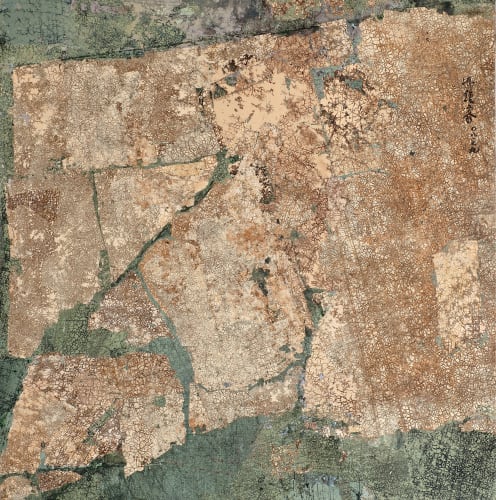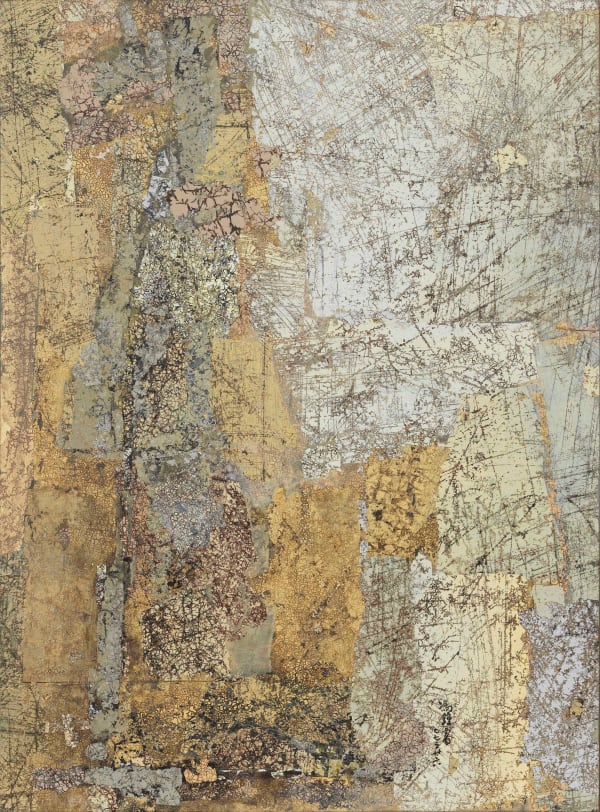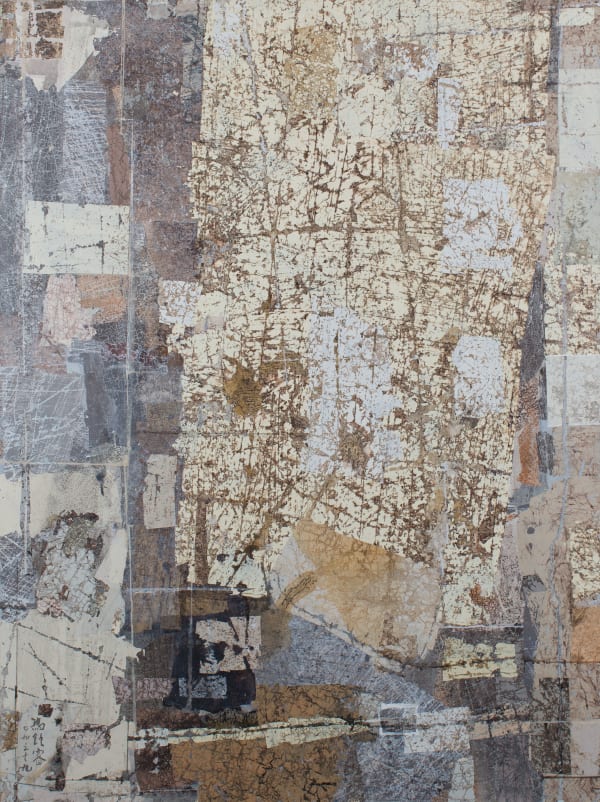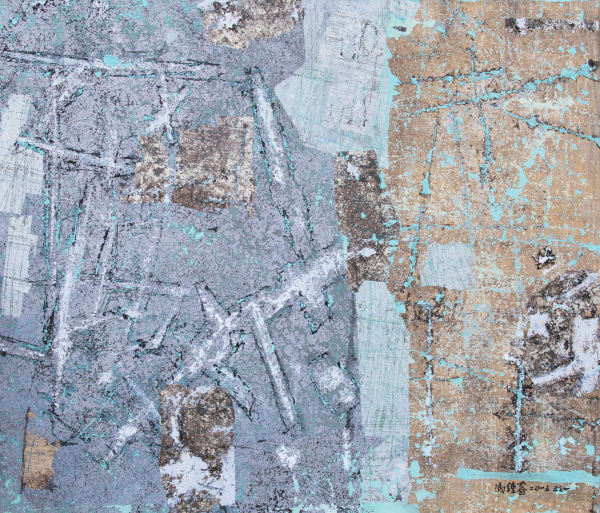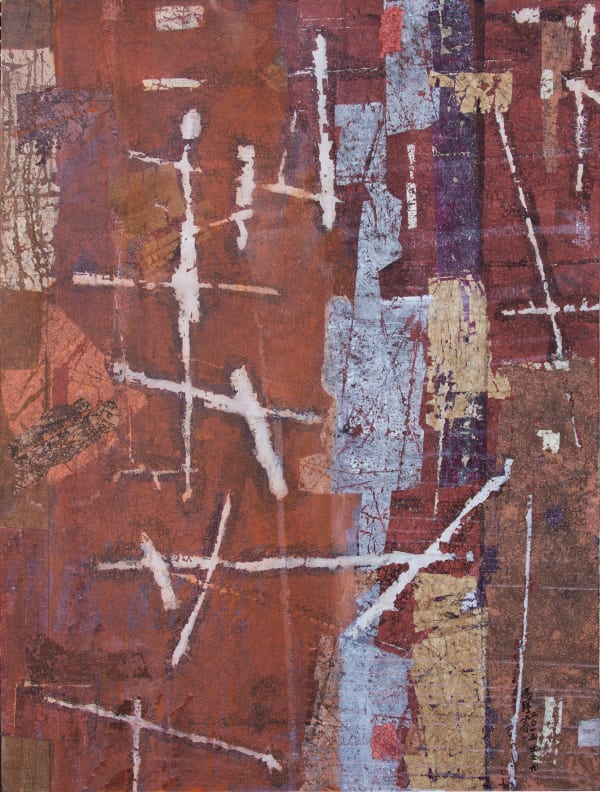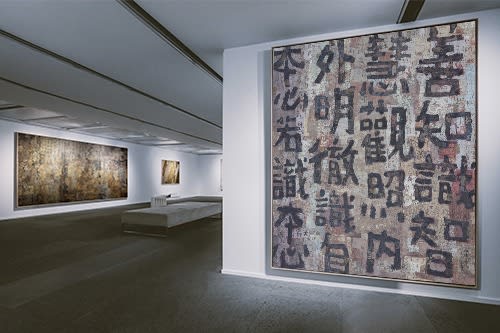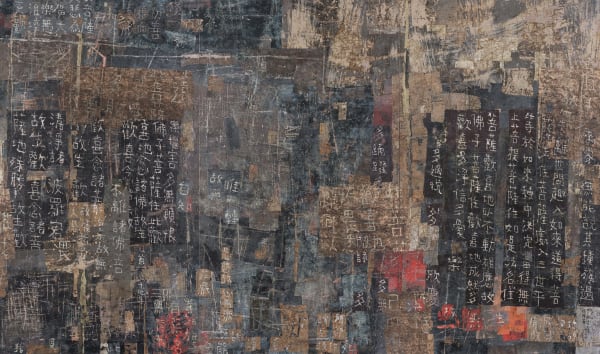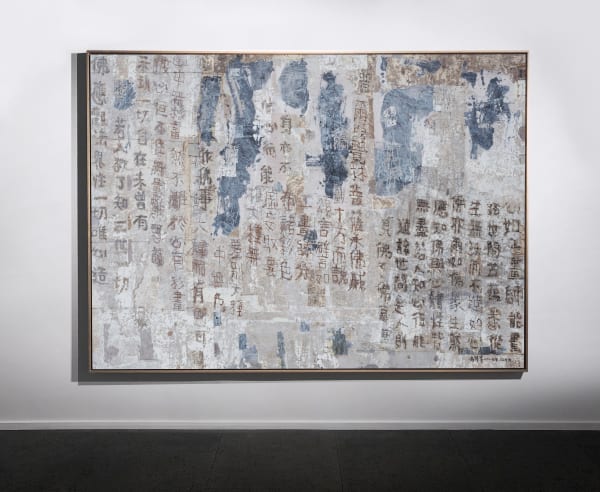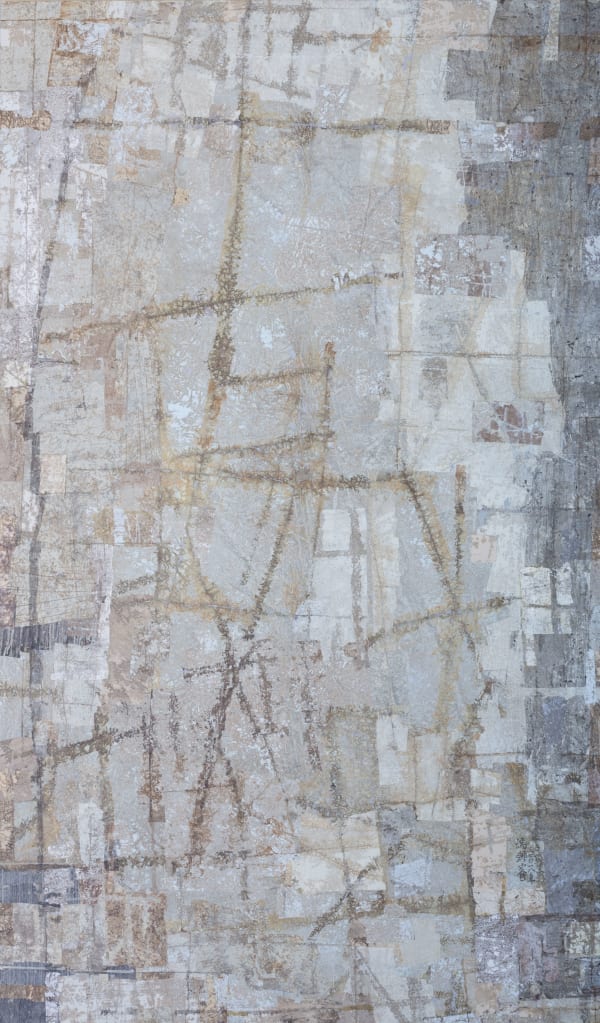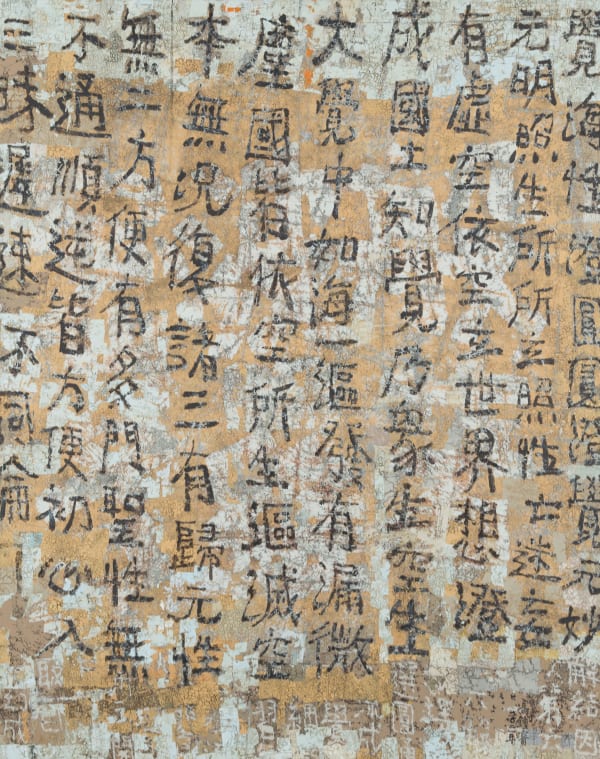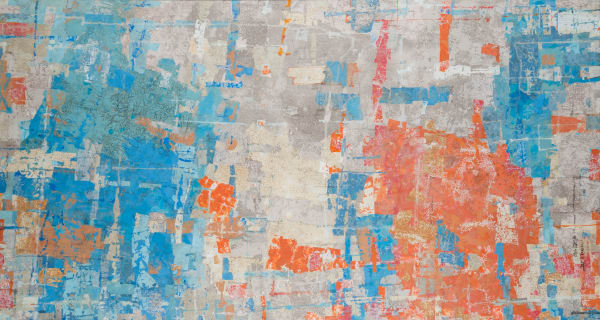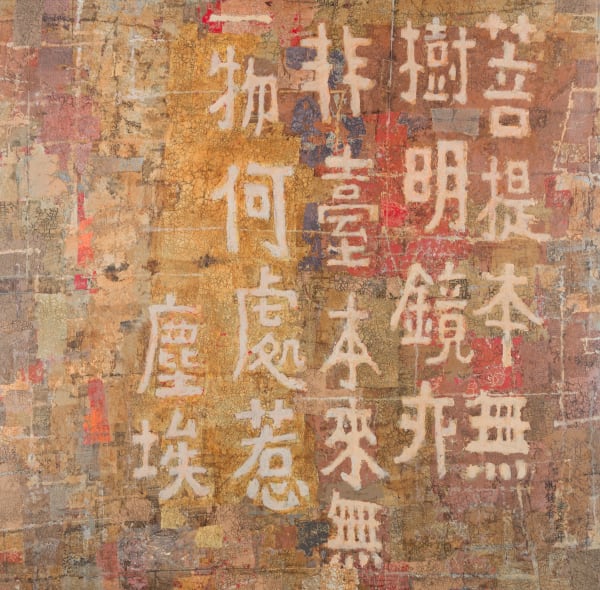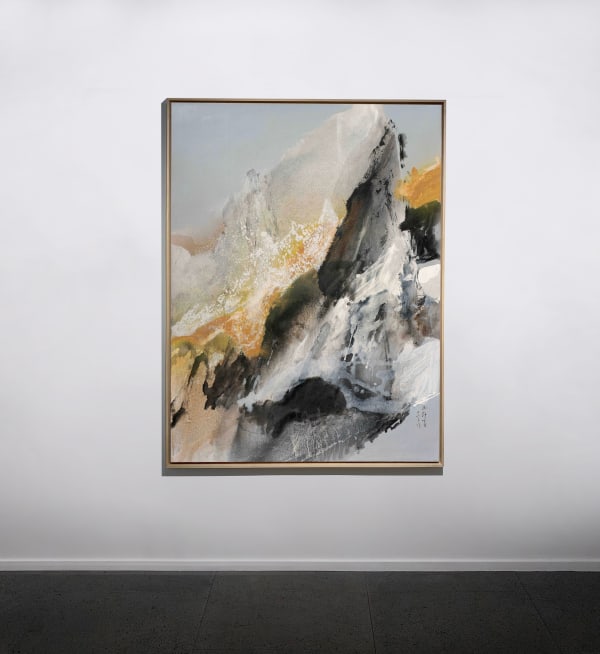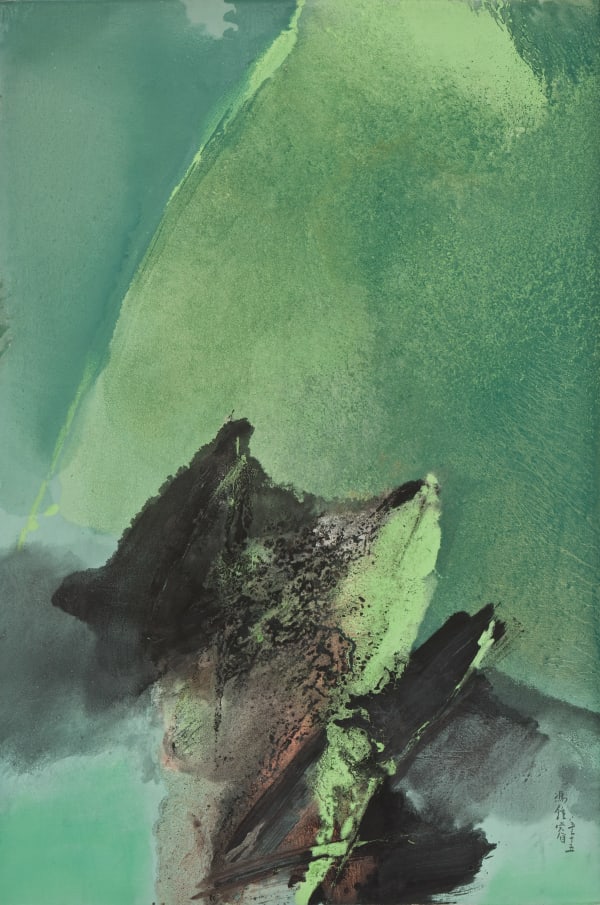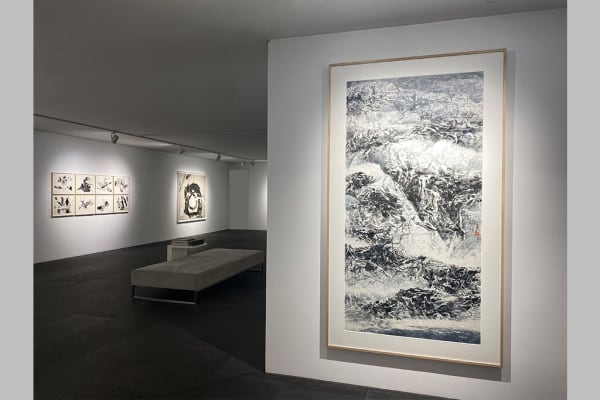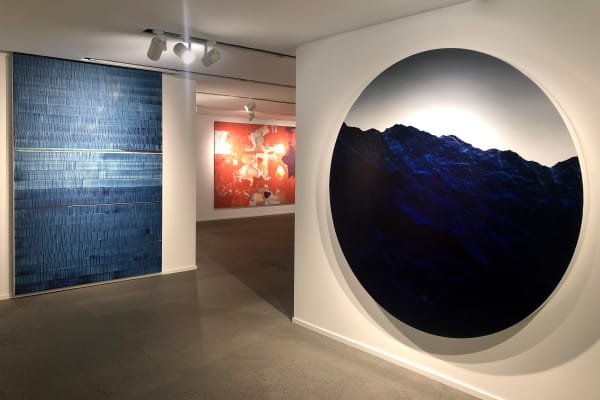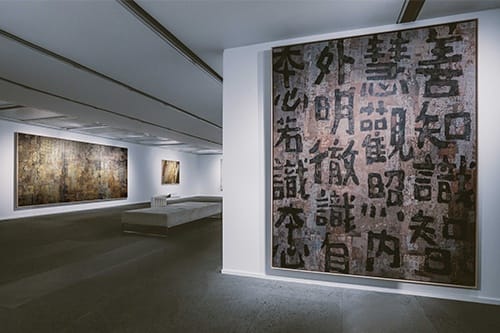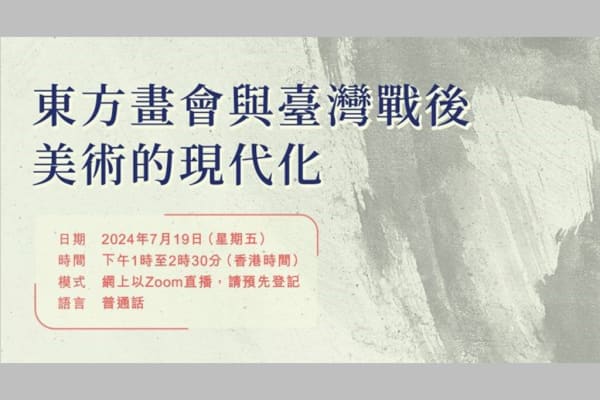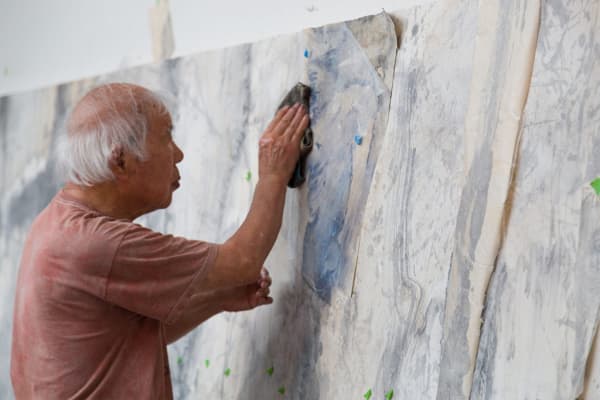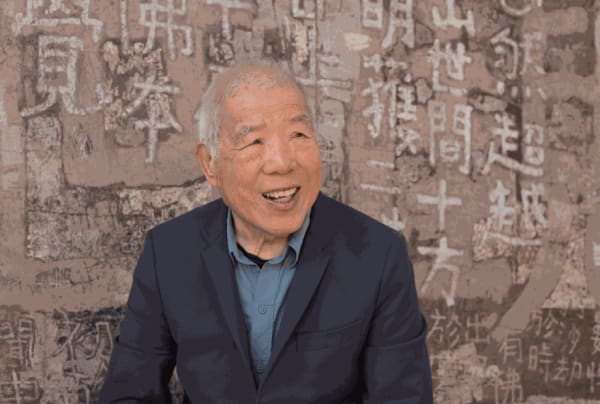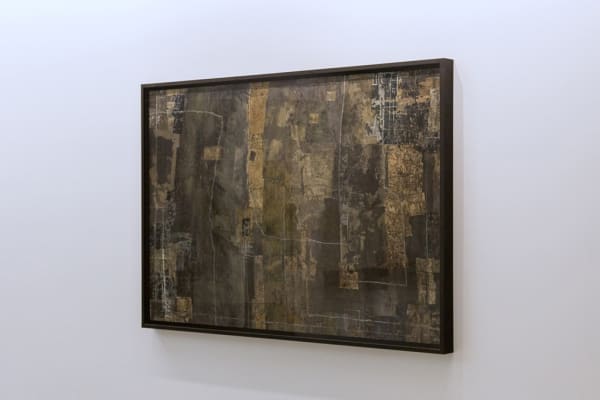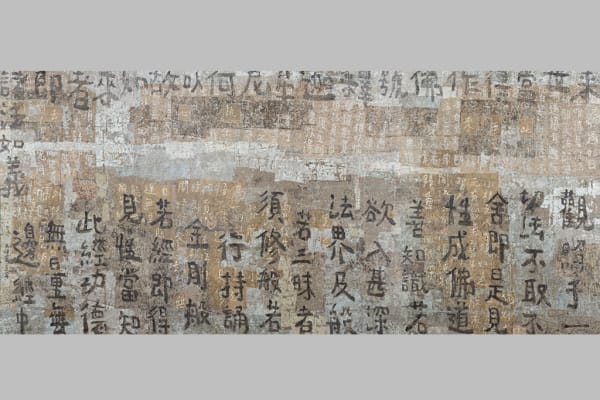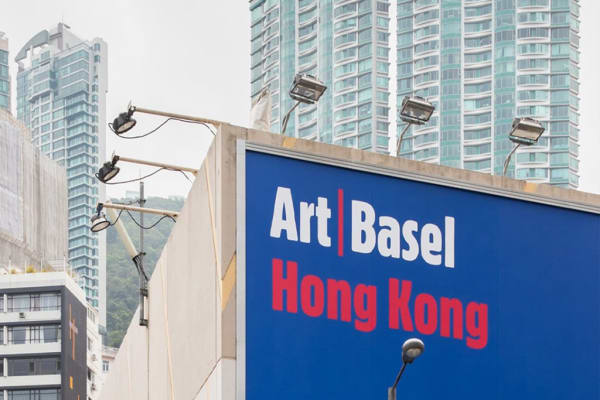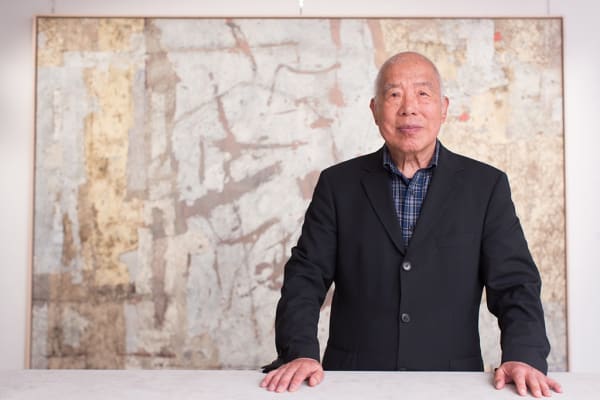Fong Chung-Ray (b. 1933, China) started his formal art training at the Cadre College of Arts and Crafts during his time at the military in Taiwan. After graduating in 1954 with a degree in fine arts, he served as an officer and created art works for the Navy. In 1961, he was invited to join the influential Fifth Moon Group. In the past six decades, Fong Chung-Ray has trailblazed an experimental fusion of Chinese traditional ink art and abstract expressionism, a result of a unique amalgamation of cultural, stylistic, and period influences in his life.
Born in China’s Henan province into a family of accomplished scholars and artists, Fong was exposed to the learning and appreciation of fine arts since childhood. However, the civil wars and foreign invasions ensued, which led to him joining the military and later moving to Taiwan as a teenager. Thereafter, Fong became inspired by abstract expressionism, which he firmly believes is the closest movement spiritually to traditional Chinese paintings, and has invariably remained significant throughout his artistic career, comprising of a wide range of styles and medium.
In 1989, Fong developed a technique in which he applied acrylic onto plastic sheets with the resulting designs transferred onto paper. Evidently, works made during this period are marked by a transition from his previous fluid, natural landscapes to harsher, man-made scenery, reflecting his shifting views on the evolution of mankind, ultimately representing the passage of time. The multilayered concoction of materials immediately conjures visions of flaking paint, scratches, and torn paper, all layered over writing, revealing details that goes beyond external presentation.
His works are collected by many important institutions and collections internationally, including Ashmolean Museum, United Kingdom; Asian Art Museum of San Francisco, United States; Arthur M. Sackler Museum at Harvard University, United States; Centre Pompidou, France; Guangdong Museum of Art, China; Los Angeles County Museum of Art, United States; M+ Museum, Hong Kong; Taipei Fine Arts Museum, Taiwan, among others.
-
 00-33, 2000
00-33, 2000 -
 07-26, 2007
07-26, 2007 -
 08-09, 2008
08-09, 2008 -
 14-29, 2014
14-29, 2014 -
 2005-36, 2005
2005-36, 2005 -
 2009-19, 2009
2009-19, 2009 -
 2015-10-12, 2015
2015-10-12, 2015 -
 2015-3-1, 2015
2015-3-1, 2015 -
 2015-4-9, 2015
2015-4-9, 2015 -
 2016-12-28, 2016
2016-12-28, 2016 -
 2016-7-27, 2016
2016-7-27, 2016 -
 2017-10-6, 2017
2017-10-6, 2017 -
 2017-3-24, 2017
2017-3-24, 2017 -
 2017-8-22, 2017
2017-8-22, 2017 -
 2018-11-30, 2018
2018-11-30, 2018 -
 2018-12-31, 2018
2018-12-31, 2018 -
 2018-4-8, 2018
2018-4-8, 2018 -
 2021-5-29, 2021
2021-5-29, 2021 -
 2021-7-2, 2021
2021-7-2, 2021 -
 2021-9-27, 2021
2021-9-27, 2021 -
 2022-5-17, 2022
2022-5-17, 2022 -
 82-73, 1982
82-73, 1982 -
 85-15, 1985
85-15, 1985 -
 89-32, 1989
89-32, 1989
-

Ink - A Witness to Millenia
Liu Kuo-Sung, Kurt Chan, Fong Chung-Ray, Fung Ming Chip, Lam Tung Pang, Li Hao, C. N. Liew, Qin Feng, Wesley Tongson, Wang Gongyi, Wu Chi-Tsung, Yan Shanchun 22 Aug - 29 Oct 2022Ink - A Witness to Millenia Exhibiting artists: Liu Kuo-Sung, Kurt Chan, Fong Chung-Ray, Fung Ming Chip, Lam Tung Pang, Li Hao, C. N. Liew, Qin Feng, Wesley Tongson, Wang...Read more -

Quintessence
Fong Chung-Ray, Michael Müller, Wesley Tongson, Juan Uslé, Wang Gongyi, Wu Chi-Tsung and Stella Zhang 28 May - 20 Jun 2020Galerie du Monde is delighted to present group exhibition “Quintessence” from May 1 to June 20, 2020. On view will be works by Fong Chung-Ray, Michael Müller, Wesley Tongson, Juan...Read more -

3E14
Fong Chung-Ray, Michael Müller, Wesley Tongson, Juan Uslé, Wang Gongyi, Wu Chi-Tsung and Stella Zhang 5 Mar - 29 Apr 2020Galerie du Monde is delighted to present group exhibition 3E14 , showcasing a diverse group of six abstract artists, in exploration of the artistic dialogue between the East and the...Read more -

Fong Chung-Ray - Enlightenment
25 Oct - 27 Nov 2018Galerie du Monde is pleased to present a solo exhibition of Fong Chung-Ray, the influential contemporary artist, who as a member of The Fifth Moon Group, a group of contemporary Chinese artists, were at the forefront of the modern art movement in Taiwan in the 1960s. Titled Enlightenment: 1998-2018, this exhibition showcases 15 works from the last two decades, with some pieces that have never been seen in the public before. This solo exhibition comes after five collaborations between the artist and Galerie du Monde, including the retrospective of Fong Chung-Ray’s work in 2015, three Fifth Moon Group exhibitions at the gallery in 2016 and 2017, and at Art Basel Hong Kong in 2017.Read more -

The Fifth Moon
Liu Kuo-Sung, Fong Chung-Ray, Chen Ting-Shih, Hu Chi-Chung and Ku Fu-Sheng 20 Apr - 1 Jun 2016Galerie du Monde is delighted to present the exhibition The Fifth Moon , which has been painstakingly organized following the retrospectives of Liu Kuo-Sung in 2014 and Fong Chung-Ray at...Read more -

Fong Chung-Ray - A Retrospective
7 May - 10 Jun 2015Galerie du Monde presents, Fong Chung-Ray – A Retrospective, showcasing 33 important works from 1965 to the present in Hong Kong. The retrospective traces the complete trajectory of Fong’s creative practice and the expansive scope of his historical periods. Fong Chung-Ray – A Retrospective showcases the distinct periods of a great leader in Chinese abstraction. The exhibition will be on view from May 7 – June 10, 2015.Read more
-

Fong Chung-Ray
HKU Press September 8, 2024Abstract Evolutions: Sixty Years of Paintings by Fong Chung-Ray, e dited by Dr Sarah Ng, captures Fong Chung-Ray's artistic journey over six decades, showcasing his...Read more -

Fong Chung-Ray
Ton Fan Group and the Modernization of Post-War Art in Taiwan July 17, 2024Abstract Evolutions: Sixty Years of Paintings by Fong Chung-Ray Public Program by the University Museum and Art Gallery, The University of Hong Kong 'Ton Fan...Read more -

Fong Chung-Ray
Artist Interview - NOC Artist Series July 8, 2024Fong Chung-Ray's painting '2019-10-29' is featured in the NOC Whampoa cafe's art wall, and NOC interview the Fifth Moon Group pioneer on his creative journey....Read more -

Fong Chung-Ray
Retrospective at UMAG, University of Hong Kong April 29, 2024'Abstract Evolutions: Sixty Years of Paintings by Fong Chung-Ray' Presented by the University Museum and Art Gallery, The University of Hong Kong Exhibition Period: 3...Read more -

The 6th Kunming Art Biennale
Featuring Fong Chung-Ray, Fung Ming Chip, C. N. Liew, Michael Müller, Wang Gongyi March 9, 2023The 6th Kunming Art Biennale - Writing and Boundary Date: 10 March - 7 May 2023 Venue: Yunnan Art Museum, Kunming, Yunnan Galerie du Monde...Read more -

Fong Chung-Ray
Collection of the San Francisco Arts Commission January 7, 2022Galerie du Monde is delighted to share that Fifth Moon Group pioneer Fong Chung-Ray’s “2018-8-6” painting is exhibited in the San Francisco International Airport as...Read more -

Fong Chung-Ray
Los Angeles County Museum of Art Collection April 19, 2021Fong Chung-Ray's 2018-6-28 has been acquired by the Los Angeles County Museum of Art. As a key member of the Fifth Moon Group, Fong has...Read more -

Art Basel Hong Kong 2021
May 19-23 April 2, 2021Galerie du Monde will be participating in Art Basel Hong Kong 2021, showcasing a diverse portfolio of works by artists Fong Chung-Ray, Michael Müller ,...Read more -

Hong Kong Spotlight by Art Basel
Fong Chung-Ray and Michael Müller November 23, 2020Galerie du Monde will be presenting a curated showcase of two artists at Hong Kong Spotlight by Art Basel – Fong Chung-Ray (b. 1933) from...Read more -

Taipei Connections
Taipei Dangdai's Online Platform April 30, 2020Taipei Dangdai has launched a new digital platform in partnership with Ocula -- Taipei Connections -- to foster engagement and connection across the art world....Read more -

Art Basel Online Viewing Rooms
March 18-25, 2020 March 13, 2020Galerie du Monde is delighted to announce our participation in Art Basel’s first iteration of Online Viewing Rooms, presenting six post-war abstract artists: Fong Chung-Ray,...Read more -

Fong Chung-Ray
Interview with Art Asia Pacific November 19, 2018Breakthroughs: Interview with Fong Chung-Ray by Olivia Wang, November 2018 The 84-year-old Fong Chung-Ray was an early pioneer of contemporary Chinese art. Born in Henan...Read more -

"Beyond Ink" at the China Art Museum, Shanghai
Featuring Liu Kuo-Sung and Fong Chung-Ray November 11, 2018'Beyond Ink' Venue: China Art Museum, Shanghai Exhibition Period: November 11 - December 5, 2018 Titled “Beyond Ink,” is the first grand exhibition organized by...Read more
